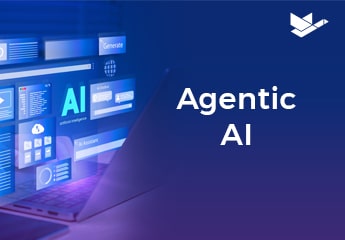In providing mission-critical functionality for running the central operational functions of P&C carriers – from product development to underwriting, rating, billing, claims, and beyond – core systems are critical to enabling carriers’ success. From personal lines to commercial and specialty, whether a carrier’s primary objective is creating highly differentiated products, enhancing customer experiences, innovating new business models, or simply trying to become more operationally efficient, core systems are a key enabler of executing on strategy. It’s been widely acknowledged that P&C insurance is changing faster than ever before, but how have core systems specifically evolved over time? In this post, let’s take a simplified look at how core systems have transformed from a technology perspective, from legacy mainframes to evergreen software-as-a-service (SaaS).
See Also: Download our eBook on 7 questions to ask a Vendor in the SaaS Core Systems RFP
Generation 1: Legacy Mainframe Solutions
After years of relying on pen and paper as the sole system of record for insurance, the rise of computing brought the mainframe as the first major generation of technology that carriers adopted. Dating back to the 1960s, these mainframe systems often relied on the COBOL programming language for developing homegrown insurance software and presented information to end users on green screen terminals. An innovation at the time, mainframes brought processing power and storage directly to carriers. However, these systems proved inflexible and costly to maintain on-site, requiring lots of re-coding projects in order to make simple changes and integrate other systems with them. Mainframes gave carriers a path forward, albeit a very slow-moving, one-dimensional one.
As the world began to adapt more modern programming languages such as Javascript in the late 1990s and original IT staff retired, finding people with the knowledge to maintain and support these antiquated mainframe hardware and software systems became a challenge in its own right.
Generation 2: Modern On-Premises Systems
Right around the turn of the millennium, we saw the continued expansion of the internet and the arrival of web-based insurance core systems that were deployed at carriers’ physical locations. IT teams at carriers no longer had to start from scratch and create insurance-specific software in-house, as technology providers had picked up the task of creating purpose-built software for the industry. This freed up IT resources somewhat, but the task of managing the systems’ day-to-day was a drain on resources. While the early functionality of these systems gave carriers a foundation which they could run their businesses on, they still required large custom coding projects in order to modify them to actually meet their needs and differentiate themselves from their competitors.
As with mainframes, the challenge of the initial investment hurdle of setting up the physical infrastructure, storage and hardware that goes along with it remained. But once overcome, the true challenge that manifested itself was software upgrades. Some carriers had minimal degrees of success in being able to stay somewhat current and reap the benefits of new features and performance enhancements, while many fell years behind the latest releases from their vendors and effectively ended up having de facto legacy systems. These challenges forced IT resources into maintaining the status quo and untangling the technical debt that had arisen due to unnecessary customizations just to get through a painful upgrade project every couple of years.
Generation 3: Evergreen, Low-Code SaaS
Later, the 2000s brought the rise of greater adoption of cloud computing, most notably SaaS. Over time, carriers began testing out self-managing or having third parties host their core systems in the cloud. While this first move to the cloud helped carriers overcome the initial hurdles of physical infrastructure and servers, and provided high availability and scalability, they were still faced with overcoming the challenges of upgrades, maintenance, and systems support. It became clear that simply getting rid of your on-premises infrastructure and rebuilding it in the cloud was simply the recipe for what effectively would become a “modern” legacy system.
2013 saw the early adopters of SaaS in the insurance industry, but it wasn’t until 2018 that the industry saw an inflection point in embracing SaaS. By Q1 of 2020, leading vendors reported demand for cloud-based policy administration systems to be in the 80-90% range, with many of these systems delivered via SaaS. Today, these dynamic, evergreen, low-code SaaS solutions provide carriers systems that are highly configurable and flexible, always kept up to date, and provide a broad number of integrations to the greater insurance ecosystem, which continues to be open and is becoming even more accessible for new insurtechs to join than before. These features of SaaS give carriers increased speed and operational agility, lower total cost of ownership, move IT into the position of being a true partner to insurers’ businesses in being able to focus on innovation initiatives, and ensure that carriers no longer have to miss out on pursuing a market opportunity.
The Future of Core Systems
Until the next disruptive technology trend comes along, SaaS appears to be the delivery model that is here to stay. What’s great about SaaS is that it enables carriers to take advantage of incremental improvements made both to the software as well as the services (the second “S” in SaaS) that impact the overall carrier SaaS experience. For instance, some of the enhancements we’re bringing to our SaaS solution at Duck Creek are oriented around providing carriers with more control and visibility into their environments, while providing functionality that will further enhance carrier DevOps.
With evergreen, low-code SaaS core systems bringing the business and IT sides of the house closer together than ever before, it’s clear that a new era of innovation is well underway.





